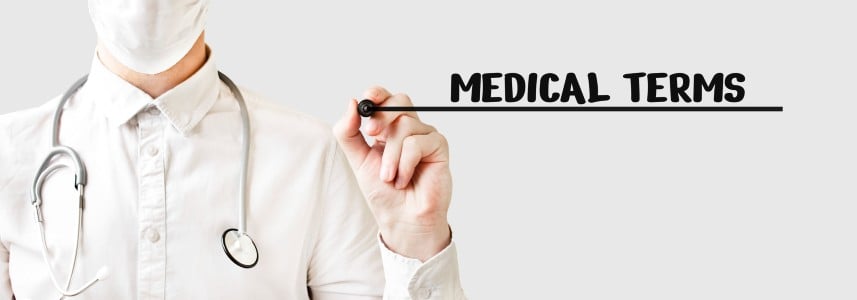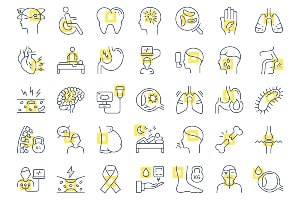About Candida Infection, Children (Thrush and Other Yeast Infections in Children)

Learn about the disease, illness and/or condition Candida Infection, Children (Thrush and Other Yeast Infections in Children) including: symptoms, causes, treatments, contraindications and conditions at ClusterMed.info.
Candida Infection, Children (Thrush and Other Yeast Infections in Children)

| Candida Infection, Children (Thrush and Other Yeast Infections in Children) |
|---|
Candida Infection, Children (Thrush and Other Yeast Infections in Children) InformationAre there other names for yeast infection?Medically, a yeast infection is referred to as candidiasis because Candida causes the infection. Thrush is known as oral candidiasis. The old name for Candida was Monilia. The infection is still sometimes called moniliasis, and thrush is still at times known as oral moniliasis. Can a nursing mother acquire yeast infections from her infant?Nursing mothers are at risk for developing Candida infections on their breasts (this is called mastitis) and can be treated with the same medication that is used for infants. Can thumb sucking cause problems with yeast?Children who suck their thumbs or other fingers may occasionally develop Candida around their fingernails. This causes redness at the edges of the nails. How do babies get yeast infections?Many infants acquire Candida infections from their mothers during the process of birth. Yeast exists naturally in the mother's vagina. When the child is delivered through the birth canal, the baby comes in direct contact with the yeast.Many babies who escape this infection at birth soon acquire Candida from close contact with other family members. How do children (and adults) acquire thrush?Outbreaks of thrush in child-care settings may be the result of an increased use of antibiotics and growth of the yeast normally present in the mouth, rather than newly acquired Candida infections. In children (and adults) taking antibiotics or steroids (such as cortisone-related asthma medications), the balance of the normal microbes in the mouth can be disturbed. This may cause an overgrowth of Candida, which in turn results in oral thrush. How does yeast affect diaper rash?Candida may infect an infant's diaper area and worsen a diaper rash. This is because yeast can grow very readily on irritated, moist skin. The infected skin is usually fiery red with areas that may have a raised red border and is usually intensely itchy (pruritic). Should a child with yeast infection be kept out of child care?There is no need to remove a child with yeast infection from child care. Since most healthy people already harbor Candida, children with thrush and Candida diaper rash do not have to be excluded from child care (as long they are able to participate comfortably).Child-care providers should follow good hygiene, including careful hand washing and disposal of nasal and oral secretions of children with thrush, in order to avoid transmitting the infection to children who may not already be infected. What are yeast infections?What are commonly known as "yeast" infections are caused by various species of a yeast-like fungus called Candida, particularly the species Candida albicans. Yeast organisms are some of the germs (including bacteria) that are normally found on various parts of the body and that ordinarily cause no symptoms or signs. What if the medication does not effectively treat the yeast infection?There are some situations when a different medication is needed to clear a yeast infection. A health-care provider may prescribe another type of antifungal cream or oral preparation that may include ketoconazole (Nizoral, Extina, Xolegel, Kuric), fluconazole (Diflucan), or itraconazole (Sporanox). What is oral thrush? What are oral thrush symptoms and signs?Thrush is yeast infection of the mouth and throat. Thrush can also be associated with yeast infections of the esophagus. Thrush appears as creamy white curd-like patches on the tongue and inside of the mouth and back of the throat. As mentioned above, in individuals with impaired immune systems, yeast infections are more common. For example, in a non-infant population, thrush may be a sign of underlying HIV infection. What is the treatment for thrush and other yeast infections?Oral thrush and yeast infections, such as Candida diaper rash, usually are treated with antifungal medicines; these include nystatin (Mycostatin), clotrimazole (Lotrimin), or miconazole (Monistat) either by mouth or in a topical cream. Luckily most Candida are very sensitive to nystatin, and resistance is rare. There are many topical antifungals available as over-the-counter brands. Oral thrush requires an oral medication that is available by prescription only.For children with diaper rash, diapers should be changed frequently and the child's skin gently cleansed with water and a mild soap, rinsed, and patted dry. Barrier creams or ointments, such as Desitin or A&D, are helpful. While cornstarch may be recommended for mild diaper rash, it should not be used for children with significantly inflamed skin. High-absorbency disposable diapers may help keep the skin dry. A baby's bottom is very sensitive, so staying dry is very important. Plastic pants that do not allow air to circulate over the diaper area should be avoided, although the diapering system should be able to hold urine or liquid feces. Why do yeast sometimes cause symptoms and signs?Certain conditions, such as antibiotic use, may upset the balance of microbes in the body (particularly between the bacteria and fungi) and allow an overgrowth of Candida. Yeast also can thrive in chronically moist folds of skin, such as in the groin.Yeast infections may flare up and then heal in most people. However, in newborns or individuals with impaired immune systems, yeast can cause more serious or chronic infections. |
More Diseases
A | B | C | D | E | F | G | H | I | J | K | L | M | N | O | P | Q | R | S | T | U | V | W | X | Y | Z
Diseases & Illnesses Definitions Of The Day
- Noncancerous Colloid Thyroid Nodule (Thyroid Nodules) ‐ How are thyroid nodules diagnosed?, Introduction to thyroid nodules …
- Skin, Laser Resurfacing (Laser Resurfacing) ‐ CO2 Laser Resurfacing, Complications of Laser Skin Resurfacing …
- Malignant Fibrous Histiocytoma (Bone Cancer Overview) ‐ Are there any treatments or medications that relieve bone cancer pain? …
- Double Vision ‐ Is it possible to prevent double vision?, What are the symptoms and signs of double vision? …
- Ageusia (Taste Disorders) ‐ Are taste disorders serious?, Can taste disorders be treated? …
- Autism Screening and Diagnosis ‐
- Alpha-fetoprotein Blood Test ‐ In which situations are high blood (serum) levels of AFP used as a tumor marker? …
- Polymyalgia Rheumatica ‐ How do health care professionals make a diagnosis of polymyalgia rheumatica? …
- Stump Appendicitis (Appendicitis) ‐ Appendicitis definition and facts, Are there long-term consequences of appendectomy? …
- Gonorrhea (Gonorrhea In Women) ‐ Gonorrhea facts, How is gonorrhea diagnosed?, What are sexually transmitted diseases (STDs)? …